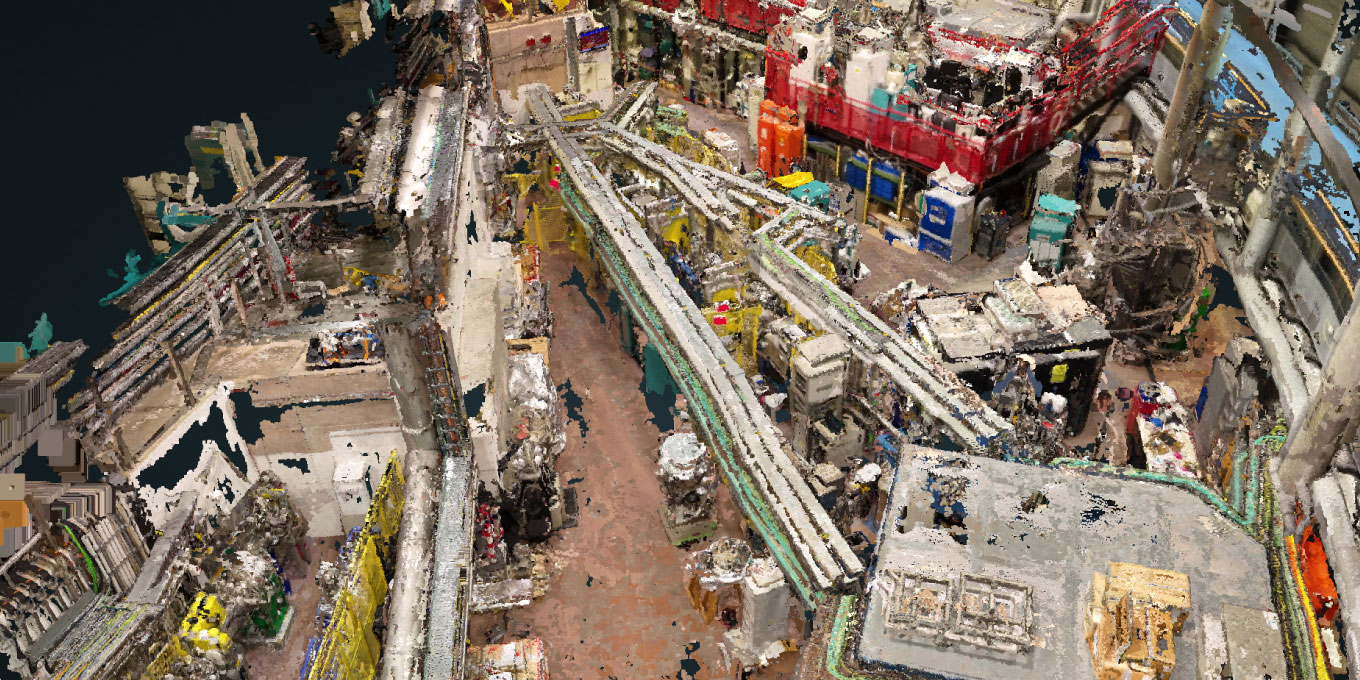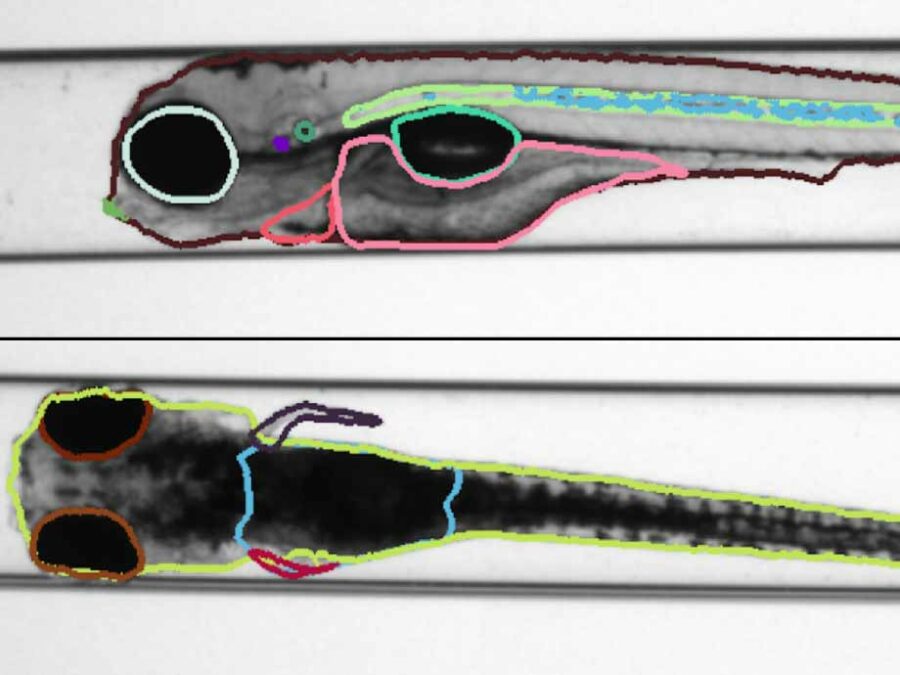Capturing Reality at BESSY II

The experimental hall at BESSY II (Berliner Elektronenspeicherring) is a constantly evolving space, featuring a diverse range of structures, devices, and experiments managed by various departments, companies, and individuals. This dynamic nature necessitates regular updates to ensure the floor plan accurately reflects the hall’s current state.
To address this, a video drone is deployed to capture the hall’s layout in real time. The footage is processed into high-resolution images and used for 3D reconstruction of the scene, which is rendered from an orthographic top-down perspective and seamlessly overlaid onto the floor plan. This method allows for efficient data comparison and updates, enabling more precise planning with the aid of modern digital tools.
Furthermore, the drone data facilitates the creation of a comprehensive 3D representation of the floor plan, providing enhanced visualization and deeper insights into the hall’s layout and infrastructure.


